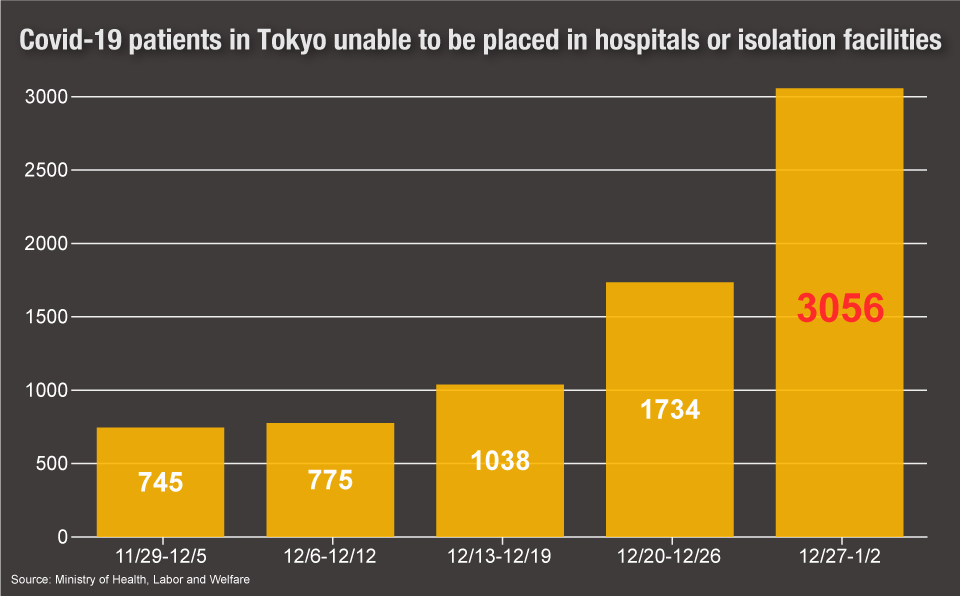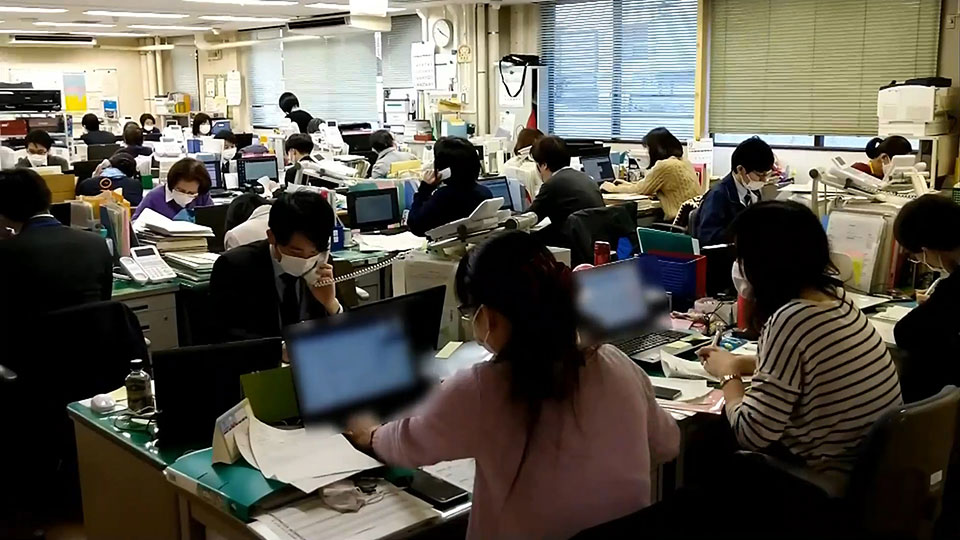Health Ministry officials say that in the week through January 2, they were unable to secure spaces in hospitals or isolation facilities for more than 3,000 infected people. In just the past month, the number of cases has increased four-fold.

When a person tests positive for the coronavirus in Japan, it's up to their local public health center to direct them to a hospital where they can get treatment, or else to a hotel or other facility where they can be isolated. But these centers, including one operated by Tokyo's Kita Ward, are being overrun.
Kita Ward’s public health center is dealing with about 50 new infections each day. That’s almost double the number in early December. Patients are normally assisted on the same day they test positive. But currently, a staff shortage means only half of new cases are being properly attended to.
The public health centers are also supposed to check up on people who are self-isolating at home, phoning them twice a day. The Kita Ward center initially had five staff members doing this; the number is now up to 20. But despite the increase in manpower, they are still finding it difficult to keep up.
The head of the center, Maeda Hideo, says it is running at full stretch and needs more staff. “We get the impression that health centers and hospitals are being stretched beyond limit,” he says.

Tokyo has reached a critical stage on a series of indexes used to assess the severity of the coronavirus situation, including hospital bed availability. As of January 5, the occupancy rate was 78.1%. For seriously ill patients, the rate stood at 87.4%. Those figures are on the highest level of a scale that a government advisory panel uses to assess the outbreak – and calls for measures to prevent the medical system from collapse.
The Tokyo Metropolitan Government is working to secure an additional 600 hospital beds for coronavirus patients. So far there are 4,000 beds allocated across the capital. Experts warn that as the infection rate increases more patients will require hospitalization.
Tokyo no longer has available hospital space for Covid-19 patients who also require kidney dialysis. The Tokyo Metropolitan Ward Disaster Dialysis Medical Network reports that all suitable beds were filled as of January 2.
Dialysis patients are especially vulnerable to the virus and have a high mortality rate. They require hospitalization in the case of infection and clinics that provide dialysis services are being asked to accommodate such patients.
“We are overwhelmed when it comes to infected people who also require dialysis,” warns Dr Kikuchi Kan of the Japanese Association of Dialysis Physicians.
The Metropolitan Police Department reports that at least 122 coronavirus patients have died in Tokyo after their condition suddenly deteriorated at home or elsewhere. About half that number was recorded just last month, with most cases involving people recuperating at home or at accommodation facilities.


